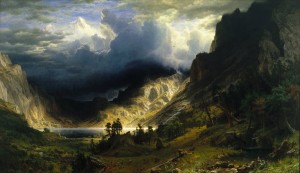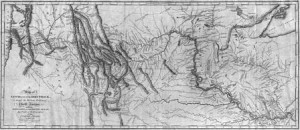Bird Woman
That winter was unusually bitter at Fort Mandan on the Missouri River, so cold, in fact, that the river froze solid enough to allow the great herds of bison then wandering freely over the prairies of what is now North Dakota to meander from bank to bank without breaking through the ice. (1)
Despite the cold, life continued on as it normally did in the five bustling villages of the indigenous Mandan and Hidatsa nations situated just upriver from the cottonwood palisade fort.
It was there, on February 11, 1805, just as the sun was dipping low on a clear horizon to the west, that a 16-year-old Shoshone woman named Sacagawea—captured from her own people years earlier—delivered her first child into the world after a long and painful delivery, assisted by a secret rattlesnake potion and the more scientific efforts of an American Army captain named Meriweather Lewis. (2)
Lewis and another officer, William Clark, were wintering among the Mandan before continuing their journey west with three squads of enlisted men hand-picked for an exploratory expedition commissioned two years before by President Thomas Jefferson.
There have been few journeys in history like it before or since. The members of the Corps of Discovery would travel more than 8,000 miles through some of the most rugged and isolated terrain of the western United States, all the while creating around 140 maps and documenting precious details of the natural world and indigenous cultures along the way.
It was a journey that would test the inner mettle of the hardiest infantrymen, but the young Sacagawea, hired on as a translator, would match these men step for step, all the while laboring for her infant son and less hardy husband, a French trader who had won her in a bet from her captors.
She was known to them as “Bird Woman.” Despite exercising limited power over her own situation, she would display indispensable reserves of dignity, loyalty, and perseverance.
On more than one occasion the success of the venture would hinge upon her efforts. She would save the expedition’s prized records from a capsizing boat, convincing Lewis to ascribe to her “equal fortitude and resolution with any person on board at the time of the accident.” (3)
Her calm presence among the men would be a sign of peace to hostile parties along the way, and, as translator, she would become the mouthpiece for a westward-looking nation that was not even her own.
It was in August that same year, on top of the Continental Divide, that fate would select her for a great kairos moment to save the expedition and spare, in all likelihood, the lives of the men with her.
At a low point of the journey—out of food and critical supplies, and needing horses to proceed—the explorers were confronted by a band of suspicious Shoshones led by a warrior named Cameahwait.
Sitting down to a parlay with an extremely tenuous outcome, Lewis plied Cameahwait with gifts, using Sacagawea as an interpreter.
Truth suddenly became stranger than fiction when Sacagawea recognized Cameahwait as the brother she had known in the years before her capture. Jumping up, she “ran & embraced him & threw her blanket over him & cried profusely.” (3)
Softening, an astonished Cameahwait agreed to cooperate with the group’s mission, supplying them with provisions, horses, and guides through the rugged mountain passes between them and the sea.
The site where the parley occurred later became known as Camp Fortunate, near what is now Dillon, Montana, a physical reminder of the role that kairos, and an extraordinary young mother, played in the destiny of a republic.
Clark would later praise Sacagawea in a letter to her husband, “Your woman who accompanied you that long dangerous and fatiguing rout to the Pacific Ocian and back deserved a greater reward for her attention and services on that rout than we had in our power to give her.” (5)
(1) Stephen E. Ambrose, Undaunted Courage (New York: Touchstone, 1996), 191.
(2) Meriweather Lewis, Journal Entry February 11, 1805. http://lewisandclarkjournals.unl.edu/index.html
(3) Ibid. May 16, 1805.
(4) Ambrose, 277.
(5) Donald Jackson, ed., Letters of the Lewis and Clark Expedition, with Related Documents: 1783-1854, 2nd Ed. (Urbana: University of Illinois Press, 1978), vol. I, 315.


